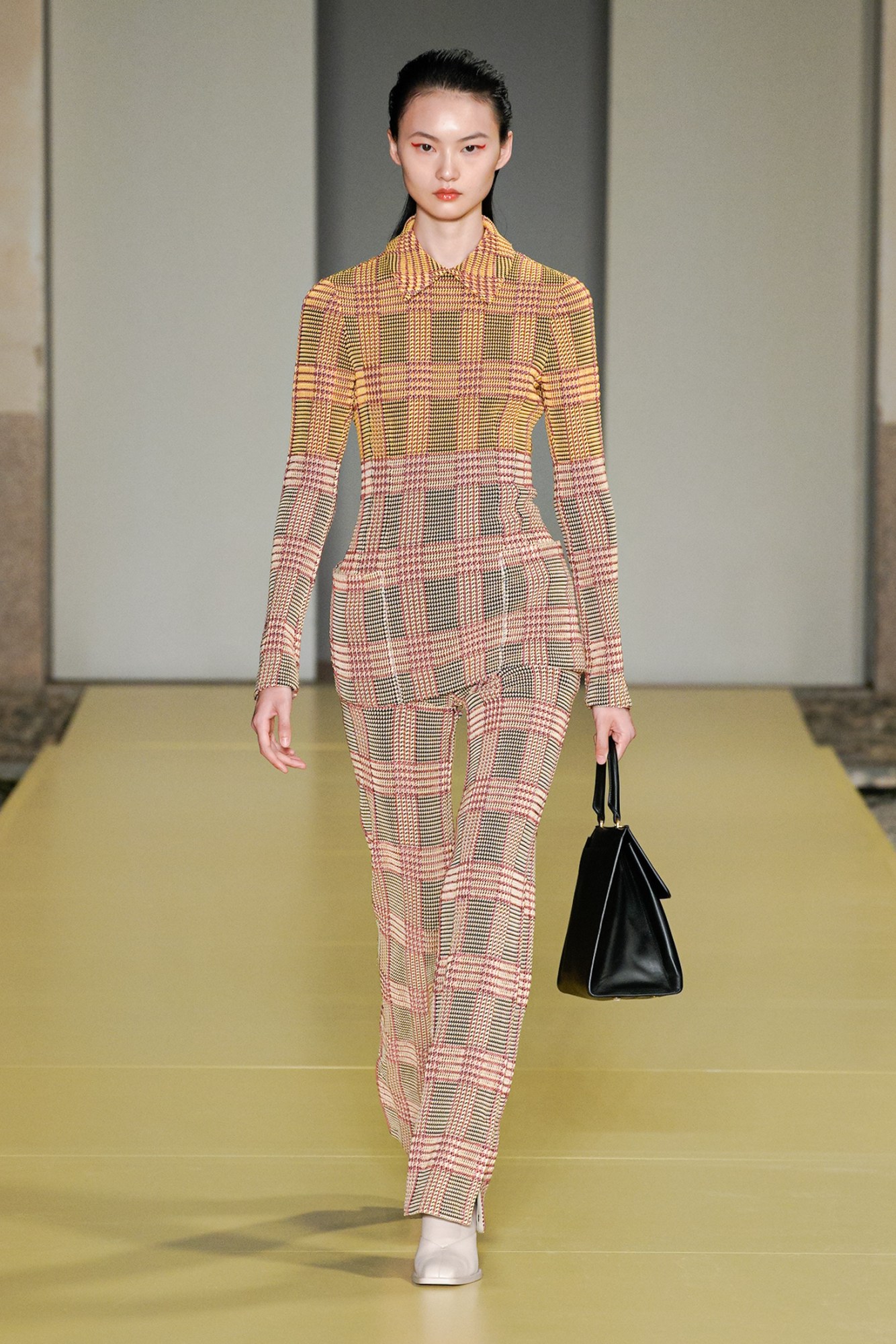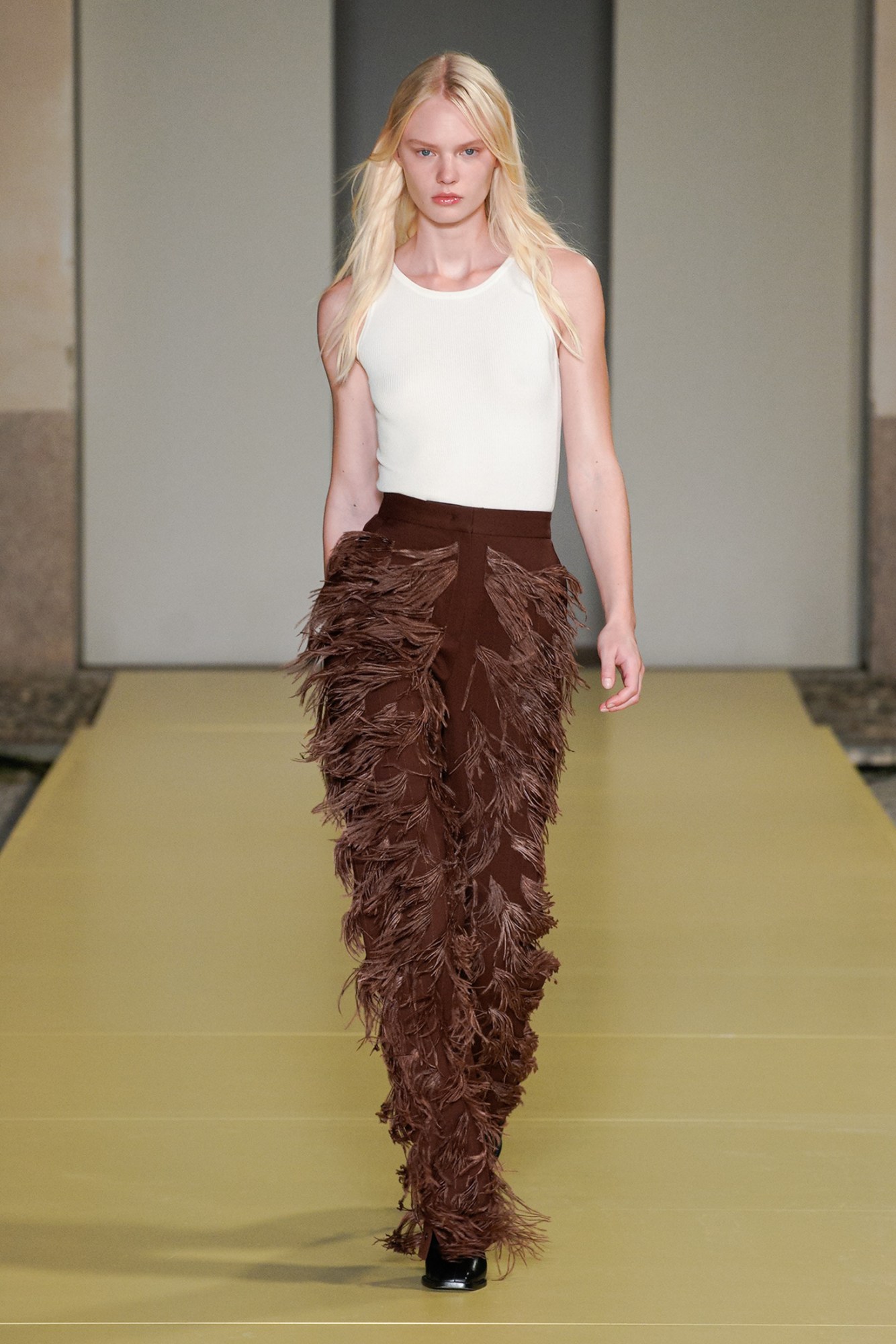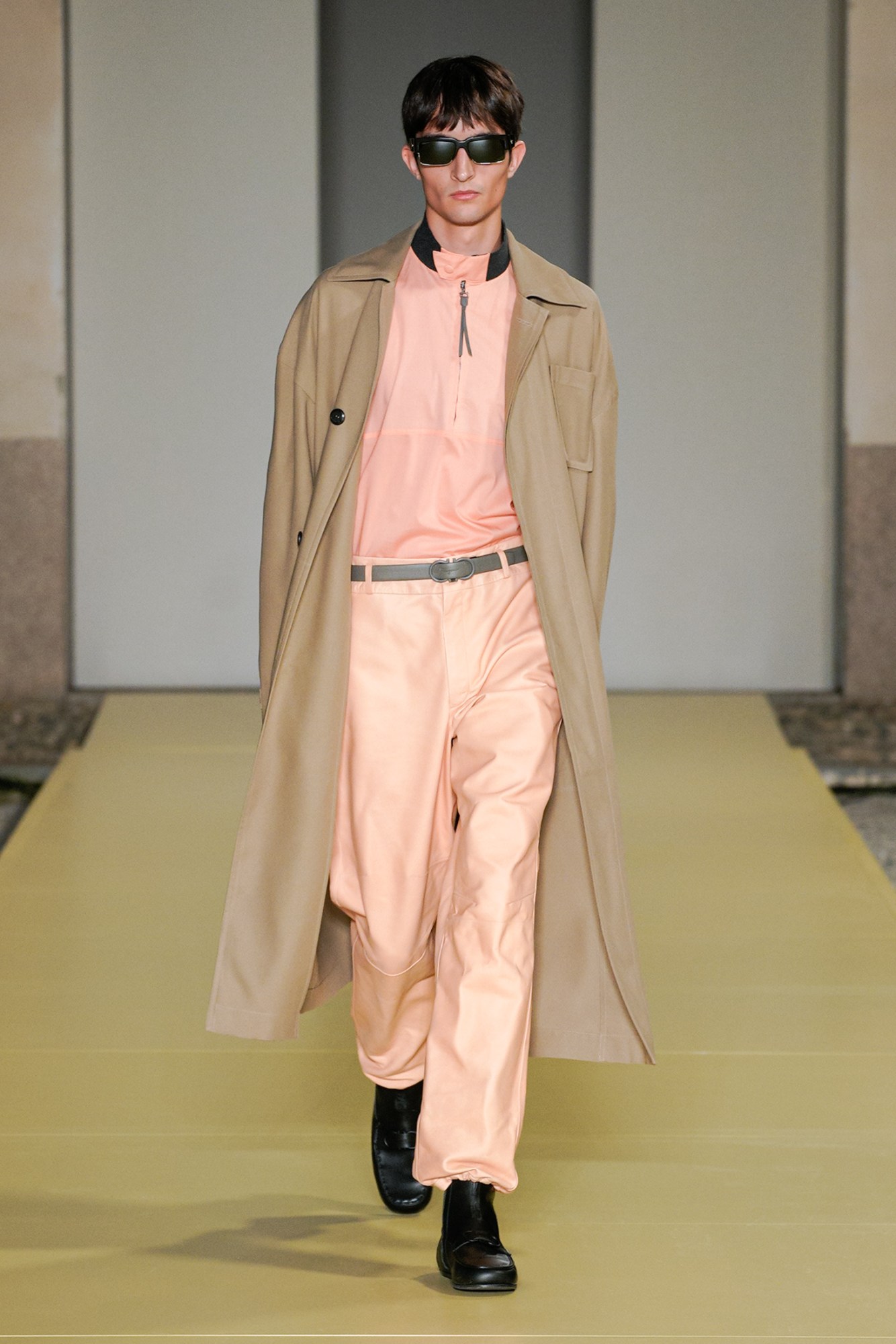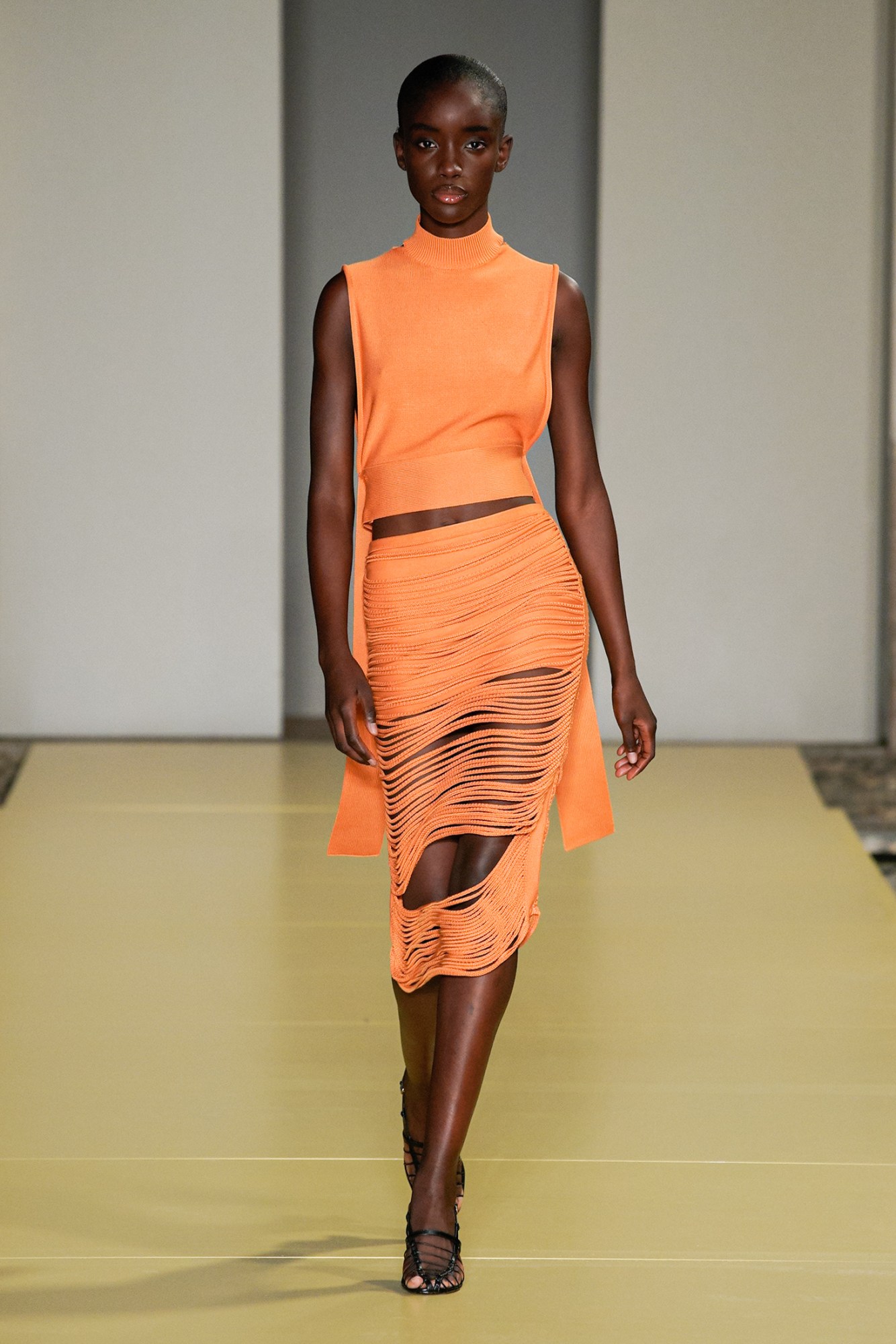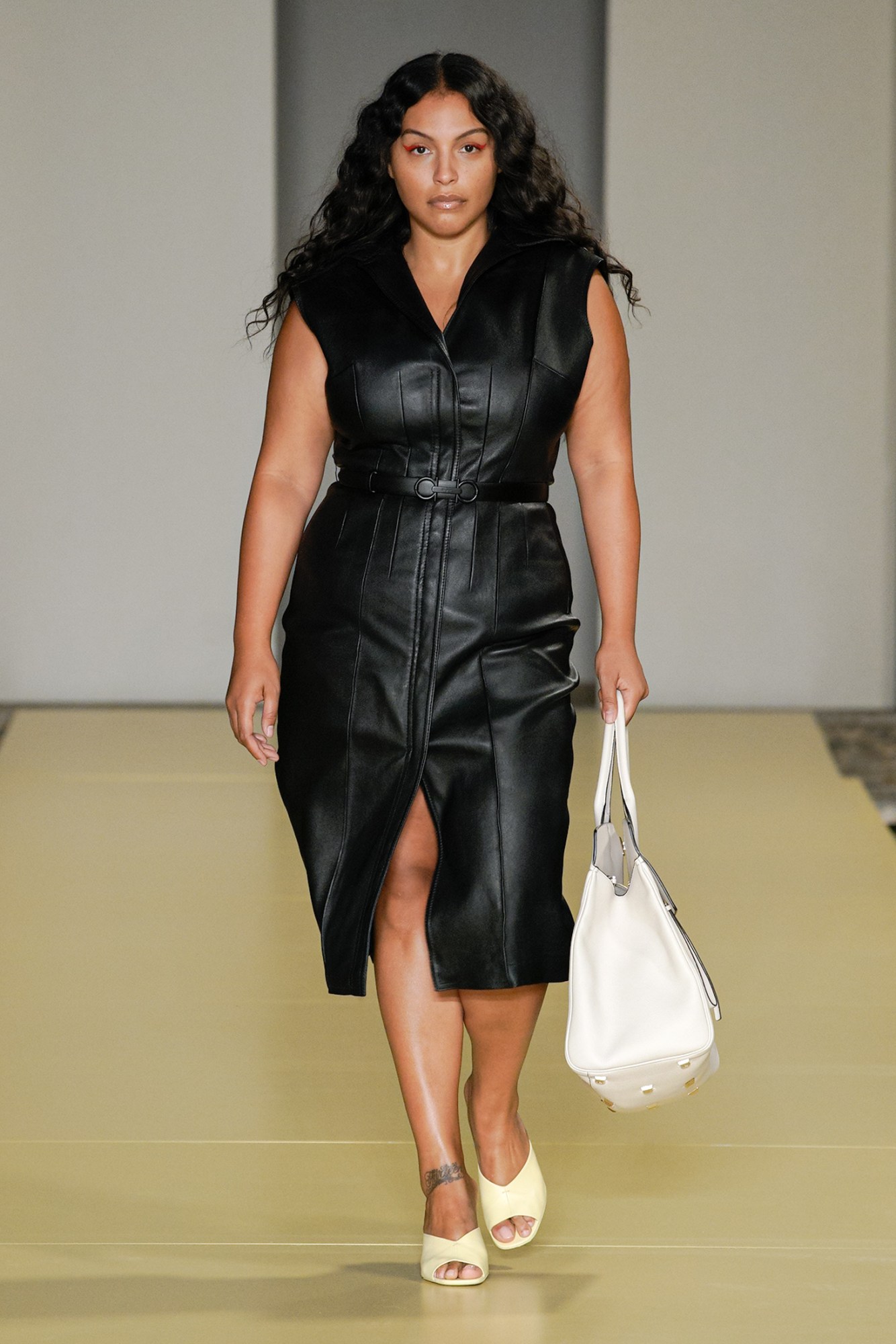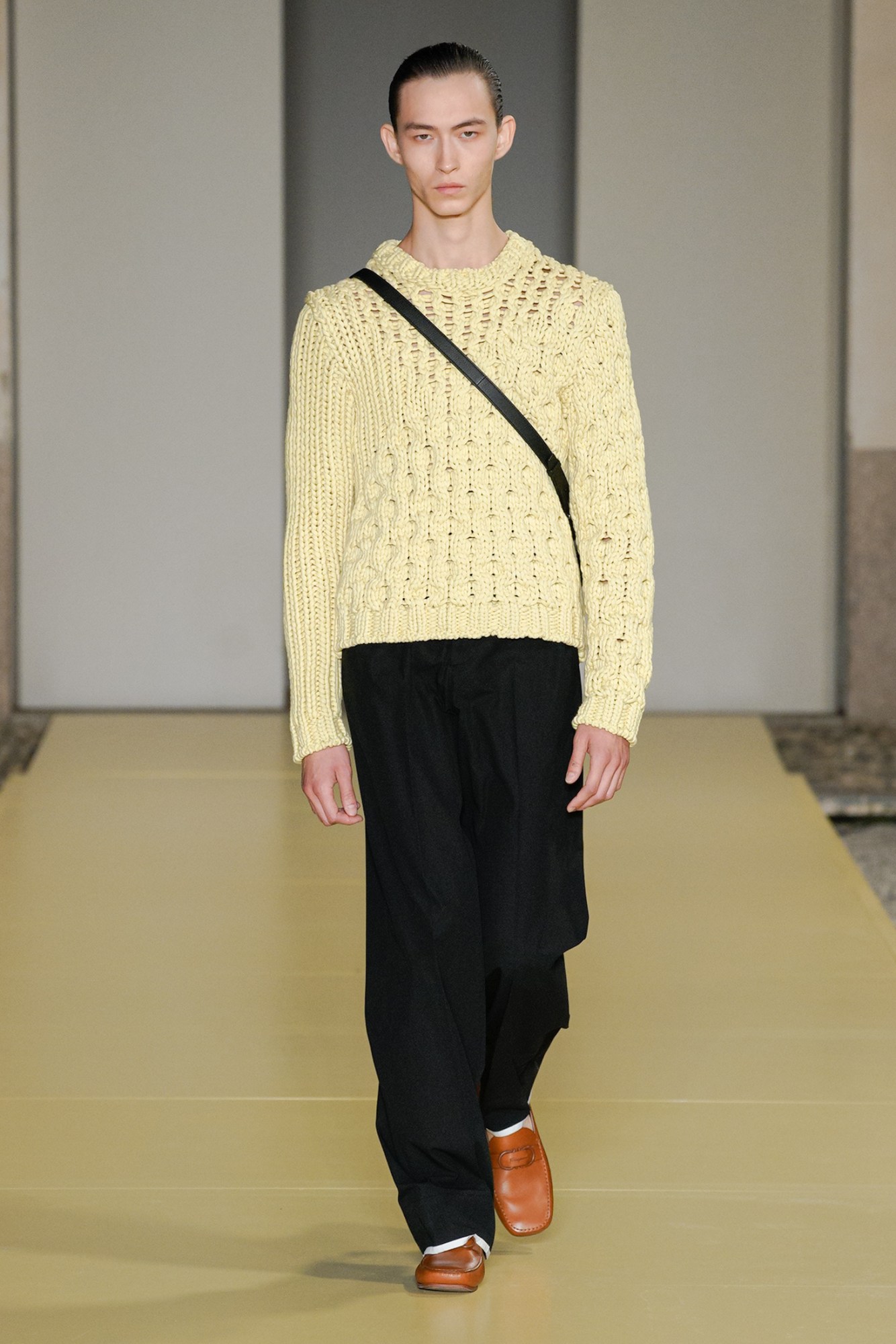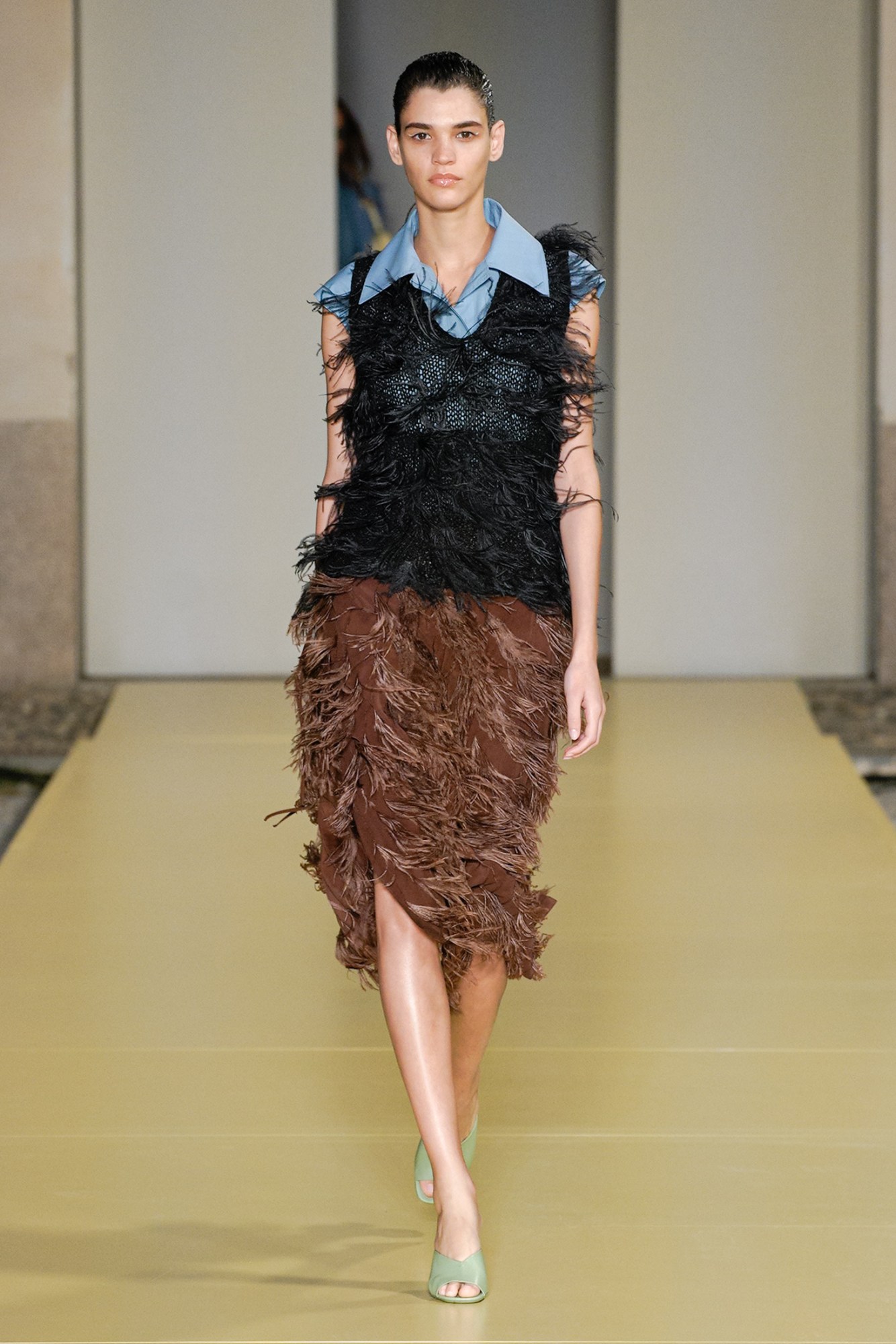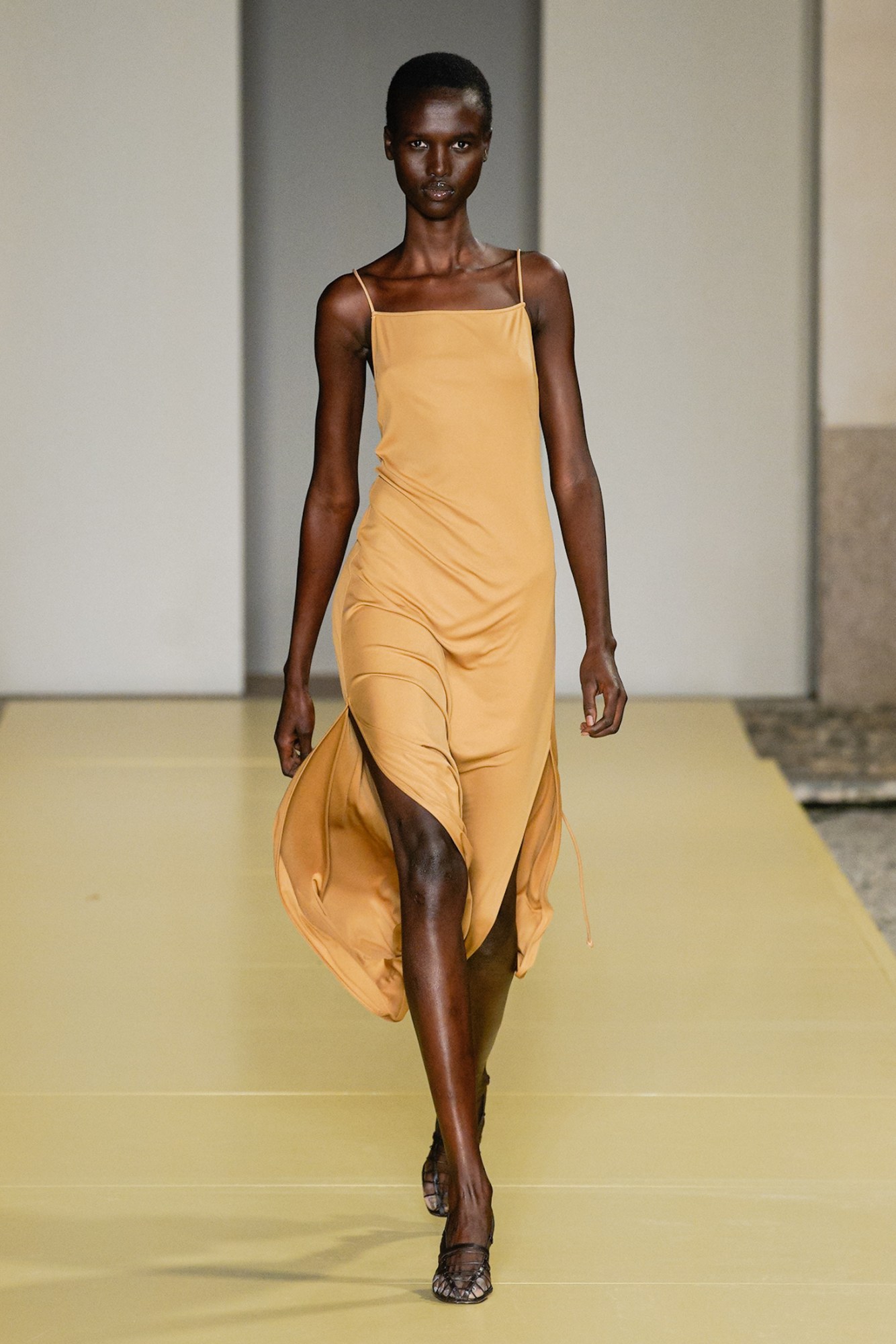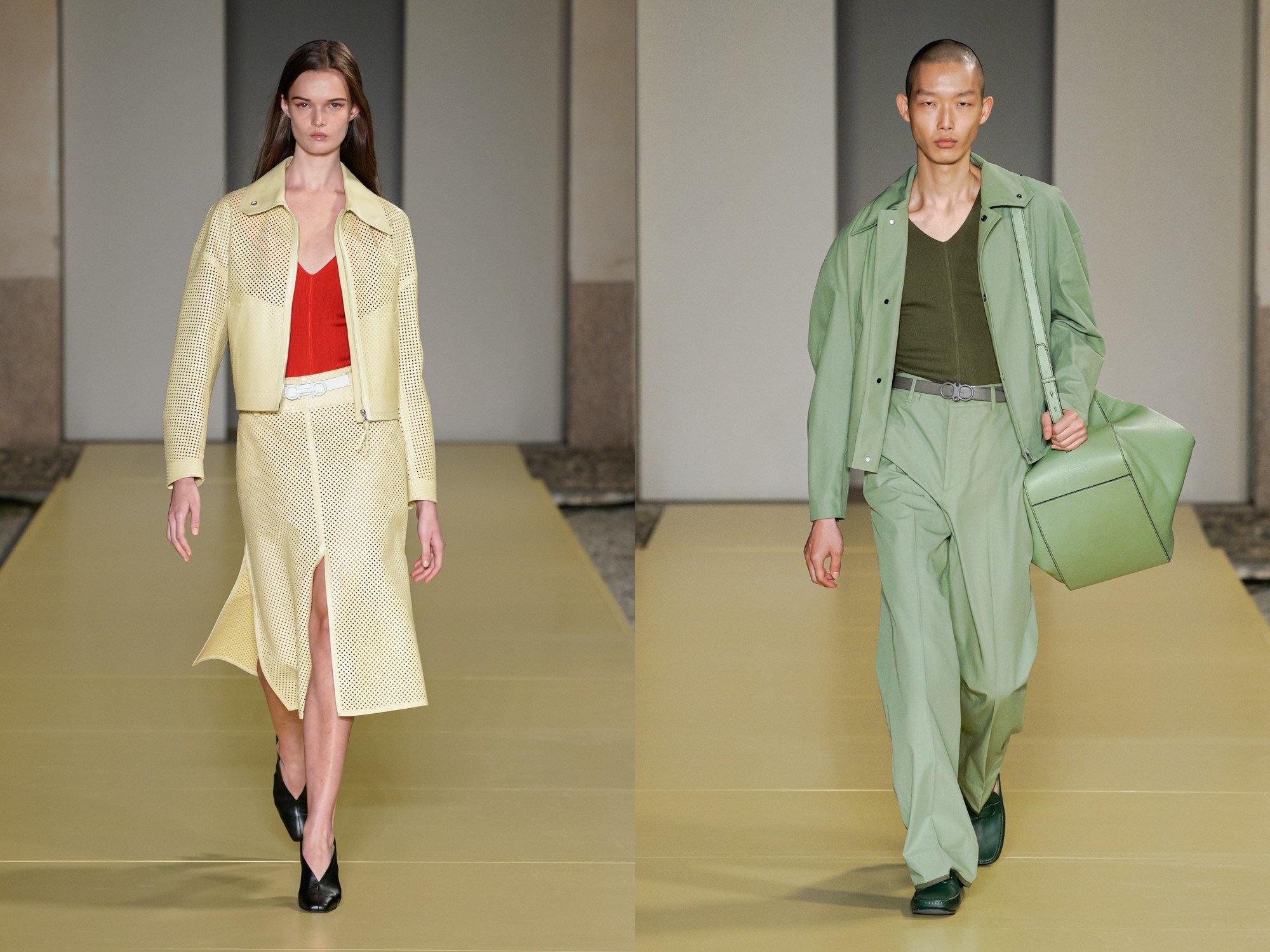Salvatore Ferragamo’s open-air show began with a short, suspenseful film; a collaboration between the brand’s creative director Paul Andrew and Italian director Luca Guadagnino. Shot in a desolated Milan, the cast of extremely good-looking characters — Anok Yai, Mariacarla Boscono, Maggie Cheng and Jonas Glöer — are all neurotically on edge as they teeter down empty streets and corridors, constantly looking over their leather-clad shoulders, clutching their enormous nappa handbags for protection, intensely peering through the tinted rectangular lenses of their Ferragamo sunglasses. It was like a beautiful thriller flick, a fashion film that might end in murder. Everyone looked intensely paranoid, yet immaculacy dressed. There was a lot of staring out into the distance. No one seemed to have a clue what was going on.
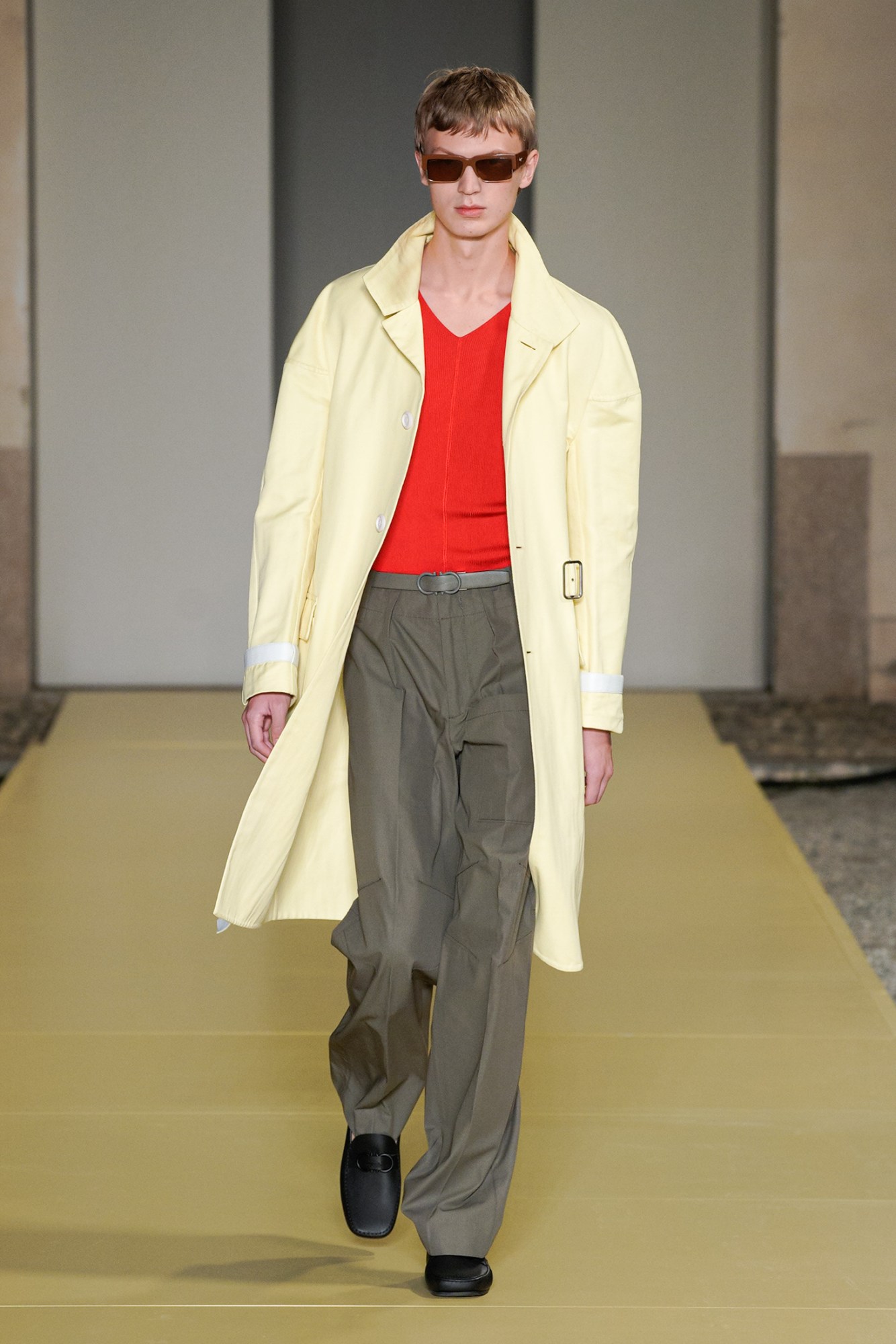
Then again, it could have just been a documentary of well-dressed civilians on their permitted daily stroll during lockdown. We’ve all been living in suspense for the last six months, after all, albeit in tracksuits and masks — not leather twinsets or feather-strewn trousers. On-screen suspense is nothing compared to the horror of the real-life new cycle. If it felt Hitchcockian, it was because, during lockdown, Paul re-watched a bunch of the legendary director’s classics — Marnie, Vertigo, The Birds — and became enamoured by the Technicolour palettes and the old-world poise of those icy heroines (Guadagnino was equally inspired by them for his 2009 film I Am Love). “In the past, watching those movies has always felt like inhabiting a surreal and strange world,” Paul explained. “But watching them during lockdown was different: they felt like ‘real life’ because ‘real life’ itself had suddenly become so strange, surreal and oddly beautiful.”

The film was followed by an actual fashion show, in which an equally glittering cast of models walked out with a strident sense of purpose to Everything But The Girl’s Missing –a lockdown anthem when you come to think of it. They wore the same clothes as in the film, but with an entirely different attitude. The suspense had dissipated into colourful displays of confidence: pastel-coloured twinsets, round-shouldered jackets and overcoats, nappa-collared boiler suits and the occasional slinky silk slip dress, or feather-strewn ensemble. It all felt like a great metaphor for just how much has changed in a couple of months, how much our outlook or the cultural climate can colour the way we see clothes and feel in them. In the film, which was made in early August, the clothes seemed sharper and more austere. In real life, they seemed effortless and optimistic. As one of the handful of shows in Milan, a city that was hit hard by the coronavirus and empty for months on end, it felt like a full-circle moment. So much has changed and so much is changing. The point is that tomorrow is always another day — and every Hitchcock movie has a happy ending.
